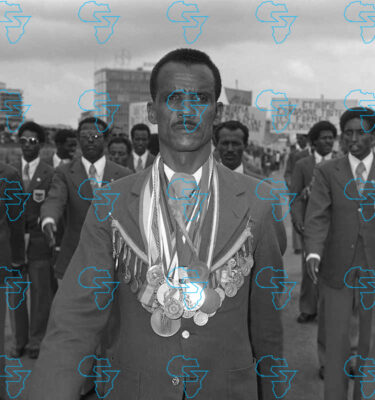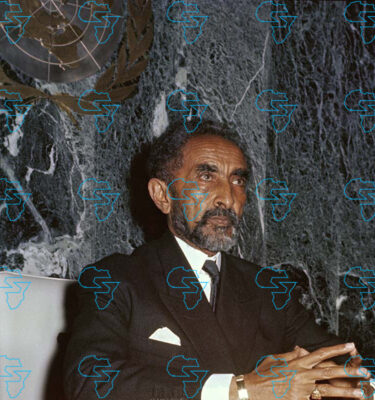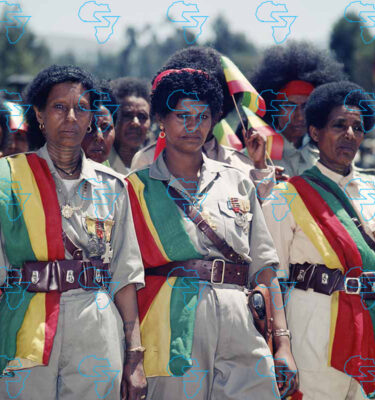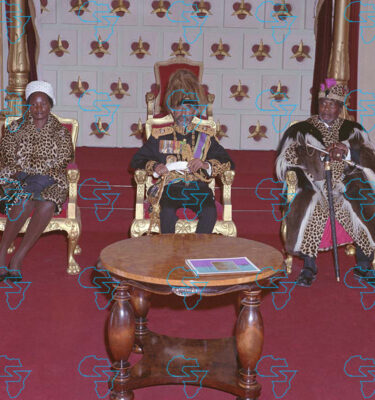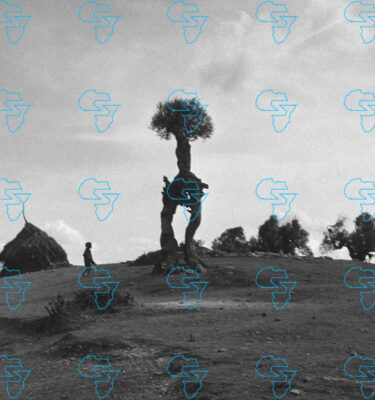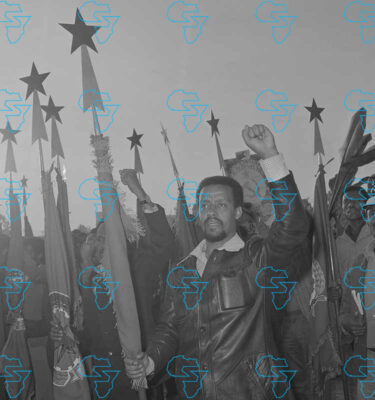
Centralization, Contradictions, and the Struggle for Inclusive Governance
Ethiopia’s mining law is a paradox: a framework designed to regulate one of the country’s most promising sectors, yet one that consistently undermines the very inclusivity and governance it claims to promote. This was the argument presented by experts and government officials who convened in Addis Ababa last month for a conference on inclusive mining governance.
Federal officials and their counterparts from the Afar and Oromia regional administrations gathered at the Hilton hotel in an attempt to remedy age-old flaws as the sector begins to grow in earnest.
Mineral exports brought in close to USD 1.9 billion last fiscal year—an all-time high driven primarily by a staggering surge in gold exports. The participants of last month’s conference argued that sustaining this level of growth requires swift and sweeping changes to the mining legislation and governance.
From The Reporter Magazine
The Mining Operations Proclamation ratified by Parliament more than 15 years ago was the subject of heavy criticism during the lively discussion. Detractors argued the law is flawed, outdated, and ill-suited for a country that claims to respect both regional autonomy and community rights.
A representative from Oromia Mining Group, an influential enterprise under the Oromia regional administration that owns large stakes in several gold mining outfits, and an expert from the Ethiopian Minerals Corporation contended that the proclamation’s heavy emphasis on centralization is a root problem in the sector.
The law vests overwhelming authority in the federal government, grants Addis Ababa the power to approve or deny large-scale projects, and leaves regional administrations with limited rights over licensing, royalties, and taxation, according to the proclamation’s critics.
From The Reporter Magazine
They argued that for a unitary state, this might seem natural; for a federal state, it is a contradiction that breeds tension. Participants acknowledged that regions like Afar and Oromia have long protested this legal arrangement, where regions bear the environmental scars and social upheavals of mining but see little of the revenue.
The law, by refusing to enshrine revenue-sharing, effectively tells these regions that their minerals belong to the state but their problems are their own, experts argued.
“The problem is not that we lack a constitution,” an official from the Oromia regional administration said during a discussion of regional experiences. “It is that the mining law ignores it.”
Article 52(2)(d) of the Constitution grants states the power to administer land and natural resources. Yet in practice, licenses and revenues are monopolized at the federal level.
“How can we talk about inclusive governance when the Constitution itself is being sidelined?” asked the official.
A representative of the Ethiopian Mineral Corporation pointed to contradictions and loopholes within the proclamation. He began by referencing Article 11, which defines the criteria for acquiring a mining license: “Qualifying any person for a mining license means, first, being financially capable, and second, being technically skilled.”
However, he argued that these provisions are inconsistently applied.
“Since the law grants local associations licenses to mine alluvial gold, when an investor from another place brings money or knowledge, he is forced to share 30 to 40 percent of the direct sales revenue or profit. Why is this not enforced in the proclamation?” asked the rep.
He contrasted this with another section of the law.
“In one proclamation, it says any entity engaged in traditional mining does not need financial, technical, or professional expertise. But what if this includes all the traditionally produced gold for sale? Alluvial gold requires money, expertise, and technical capacity—otherwise; it will lead to a waste of resources and a loss of results,” he said.
He pointed to Adola, a gold-rich area in Oromia’s Guji Zone, as a clear example of untapped potential.
“In Adola, we need to look at the technological advances in hydraulic fracturing and dredging. In this case, 500 kilograms can be produced from one place. In this way, the country, the region, and society will benefit greatly from the quantity and quality of the product,” he said.
The contradictions extend to licensing conditions.
“The proclamation says mining development permits will not be granted for traditional products. However, in various regions, rock gold (Ensework) is available to traditional producers. Even if investors were to come with wealth and technology, the producers would not cooperate—or they’d say ‘Let’s work in partnership, 30/70. Investors don’t want to invest heavily for 30 percent,” he said.
The representative proposed a different approach.
“It would be better if this was done by investors and the people were paid compensation. If this were the case, the country could profit much more,” he said.
He also questioned the standards guiding license allocation.
“How do we say the highest is the lowest when granting a mining license in the proclamation? There are situations where sediment can be produced at high levels. Do we have a standard to measure this? How detailed is this set out in the proclamation?” he asked.
Transparency, often touted as Ethiopia’s commitment to global standards, emerges as another hollow promise. Ethiopia has aligned itself with the Extractive Industries Transparency Initiative, yet the law itself lacks enforceable requirements for contract disclosure or community consultation.
A Mineral Corporation representative raised further concerns about gaps in the enforcement of Ethiopia’s mining laws.
Referring to Article 34, he noted: “It says that licensed entities must carry out their work with care, diligence, and efficiency, and in accordance with applicable laws, technology, and accepted practices in the mining industry. But how is this measured? Isn’t it subjective?”
The issue of licensing authority was another point of contention.
“Chapter 52 says the regional states can issue licenses for the production of structural and industrial minerals, as well as low-level industrial minerals. The Ministry of Mining, on the other hand, says it will issue exploration, testing, and production permits to all those outside the regional authorities. But in practice, every year, the production of traditional products is given to traditional people. So why is it not being implemented in accordance with the proclamation?” asked the representative.
He also highlighted troubling practices in the field.
“Article 55 warns against unlawful practices that harm both workers and the public. Yet in western Ethiopia, traditional producers are widely reported to use cyanide and mercury,” he said.
The dialogue looked toward possible solutions, emphasizing the need for collaboration between institutions.
“It is believed that if the proclamation includes a clause that supports the cooperation of regional, federal, and private investors in the country, and a system is developed for this, it would be possible to establish large-scale development networks by pooling knowledge and resources among large-scale mining companies,” said the representative.
One potential model, he suggested, is financial-sector involvement.
“For example, if banks were to buy shares, it would be possible. I said this because money is the main problem in mining. If there is a solution to financing, then mining can grow into a real engine of development,” he said.
During the session on natural resource management as a governance tool, a presentation by Dereje Feyissa (PhD), the mining law contradiction was put plain. Mining contracts remain shielded from public view; environmental assessments are conducted, but the affected communities rarely see them. The law creates the appearance of openness while maintaining the reality of secrecy, a flaw that erodes trust in both government and investors.
On the other hand, officials and representatives of the mining companies have both agreed that no issue exposes the weaknesses of the legal regime more sharply than the role of state-owned enterprises. In theory, SOEs are bound by the same legal obligations as private operators. In practice, they function in a world of exceptions. They receive licenses and concessions without genuine competition, operate with political cover, and face little accountability.
The workshop’s discussion on SOEs revealed just how deeply skewed the system has become. Instead of being held to higher standards as public institutions, SOEs enjoy immunity from scrutiny. The law, by treating them as ordinary players on paper but extraordinary actors in practice, has created a two-tiered system that stifles fairness and discourages genuine competition, experts noted.
A representative from Ethiopian Investment Holdings (EIH) emphasized that state-owned enterprises must serve as pillars of efficiency and inclusiveness if Ethiopia is to realize the full potential of its mining sector.
“The state should exercise ownership in the interest of the general public,” the representative noted, stressing that the ultimate purpose is not short-term profit but “to maximize long-term value to society in an efficient and sustainable manner.” According to EIH, this requires the state to continually evaluate and disclose the rationale behind its ownership of enterprises engaged in mining and related industries.
The official underlined that the government’s role as owner cannot be passive.
“The state should act as an informed and active owner,” he said, arguing that governance of SOEs in mining must be carried out in a transparent and accountable manner. Professionalism and effectiveness, he added, are “not optional but essential if SOEs are to deliver on national development priorities.” For Ethiopia, where mineral resources are increasingly tied to foreign exchange generation and industrial inputs, inefficient state stewardship risks undermining the broader economic reform agenda.
EIH also argued that SOEs must compete on a fair basis, not through protected monopolies or regulatory advantages. “There should be a level playing field and fair competition in the marketplace,” the representative said, noting that the state’s role as owner must be clearly separated from its regulatory and policy-making functions. This distinction, he explained, is critical to avoid conflicts of interest that could distort investment flows or discourage private participation in mining.
On issues of integrity, the EIH official called for SOEs to be held to the highest possible standards.
“State enterprises in mining should observe high standards of transparency, accountability, and integrity,” he said. To build investor confidence, they should also be “subject to the same accounting, disclosure, compliance, and auditing standards as publicly listed companies.”
Such reforms, according to him, would help align Ethiopia’s mining SOEs with global practices while ensuring they remain accountable to citizens as ultimate stakeholders.
The flaw of exclusion came into sharp focus when the Afar Mining Corporation presented its challenges.
Documents presented by corporate representatives indicated that on the ground, the law’s abstract provisions mean little. Environmental impact assessments may be written, but pastoralists displaced from their land cannot invoke them as rights.
The proclamation acknowledges environmental standards but does not grant citizens legal standing to demand them. For Afar, this is not merely a gap in the law but a lived reality: a framework that protects investors while abandoning communities.
Oromia’s case, presented later in the day, showed the opposite flaw: the absence of legal recognition for good practice. The region has experimented with revenue allocation to woredas and mechanisms for community oversight. These efforts represent progress and have reduced local tensions. Yet they are extra-legal innovations, not rights. The Mining Proclamation neither requires nor protects them. They depend on political will and could disappear with a change in policy. Oromia’s best practices reveal the law’s incompleteness. It is too rigid in centralizing control and too absent when it comes to empowering innovation, stakeholders contend.
These contradictions of centralization, opacity, SOE privilege, community exclusion, and regional improvisation noted by the participants all point back to the same flaw: a law that was not designed for inclusivity.
Nemera Gebeyehu (PhD), head of the Oromia Mining Development Authority, observes Ethiopia’s mining law was written with yesterday’s priorities in mind and that the sector needs reform.
The representative from Oromia Mining, on the other hand, points out that mining laws are designed around attracting foreign investors, centralizing authority, and securing control over resources.
Experts agree that the absence of legal guarantees for regions and communities does not simply inconvenience them rather it holds the capacity to fuel protest, conflict, and resentment.
The workshop’s final session on policy recommendations made the demands clear. Participants called for a new proclamation that enshrines revenue-sharing formulas, codifies community rights, introduces free, prior, and informed consent, and imposes strict accountability on state-owned enterprises. They insisted on binding transparency clauses for contracts and revenues, not voluntary disclosures. And they urged the creation of legal mechanisms for federal-regional dispute resolution, so that conflicts are managed through law rather than protest. For most of the participants, these are not marginal reforms. They are structural corrections, necessary if Ethiopia is to reconcile its federal design with its extractive ambitions, according to the representatives of the regions.
.
.
.
#Ethiopias #Mining #Law
Source link




